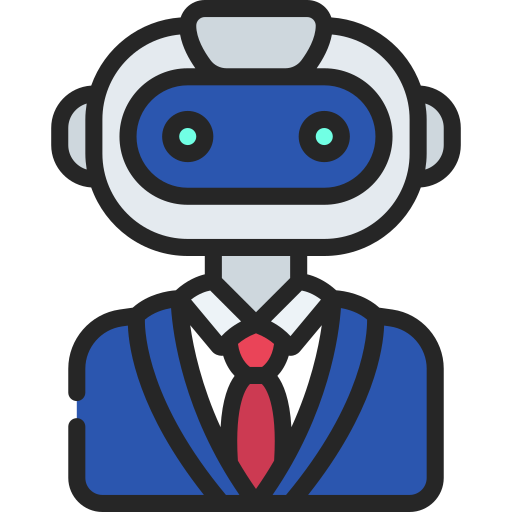
AI-Based Testing Frameworks
The complexity of modern applications demands smarter and more adaptive testing solutions. At Akross IT, our AI-Based Testing Frameworks revolutionize the traditional software testing process by incorporating machine learning, natural language processing, and intelligent automation.


Types of Testing Enhanced by AI
Test Case Generation and Optimization
Leverage AI to automatically generate, prioritize, and optimize test cases based on code changes, historical defects, and user behavior analytics.
Self-Healing Test Scripts
Reduce maintenance overhead with self-healing test scripts that adapt to changes in the UI or application logic without human intervention.
Predictive Defect Detection
Utilize machine learning algorithms to predict high-risk areas in code, allowing for targeted testing and early bug detection.
Intelligent Test Coverage Analysis
Analyze test coverage dynamically and suggest additional scenarios based on usage patterns and risk factors, ensuring comprehensive validation.
AI-Driven Test Data Management
Automate the generation and masking of test data using AI to ensure data diversity, privacy compliance, and real-world scenario simulation.
Natural Language Test Case Interpretation
Enable non-technical stakeholders to write or review test cases using natural language, which are then translated into executable scripts by AI models.
Our AI Testing Framework Process
AI-Based Testing Frameworks integrate artificial intelligence and machine learning into the software testing lifecycle. These frameworks can analyze large datasets, detect patterns, predict defects, and create intelligent test strategies that evolve over time—making them a vital asset for agile, DevOps, and continuous delivery environments.
Initial Assessment and Integration
Our process begins with a thorough assessment of your current quality assurance (QA) practices. We evaluate the existing testing tools, methodologies, test case libraries, and coverage levels to understand the strengths and gaps within your QA ecosystem.
This step is crucial for identifying where and how AI can bring the most value—whether it's accelerating test creation, enhancing coverage, or reducing manual effort. We then design a custom integration strategy that fits seamlessly into your existing workflows, ensuring that the introduction of AI technologies does not disrupt ongoing development or testing cycles.
Whether you’re using open-source tools, proprietary solutions, or manual processes, we ensure a smooth transition to an AI-augmented testing environment.
AI-Powered Test Case Design
Once the framework is in place, our AI engines begin analyzing a variety of inputs—source code repositories, application architecture, historical defect logs, user interaction data, and system behavior patterns. This analysis allows the system to automatically generate intelligent test cases that cover both functional and non-functional aspects of your application.
AI prioritizes test cases based on risk factors such as recent code changes, known vulnerabilities, and high-traffic user flows, ensuring critical paths are always tested first. This not only reduces the effort involved in test design but also ensures smarter allocation of testing resources for maximum impact.
Intelligent Execution and Self-Healing
During test execution, the AI framework operates with a high degree of adaptability. If a test fails due to minor UI modifications, changes in element identifiers, or restructured page layouts, the system intelligently adapts the scripts in real time, eliminating the need for manual updates.
This self-healing capability significantly reduces the maintenance burden typically associated with automated testing.
Additionally, the AI engine monitors the outcome of every test, correlates it with system logs and telemetry, and flags any anomalies for review. This ensures that even subtle application issues are detected early, maintaining the integrity and reliability of your test suites.
Defect Prediction and Root Cause Analysis
AI-driven testing goes beyond detecting failures—it anticipates them. By continuously learning from previous test cycles, code commits, and system performance data, the AI models develop a predictive understanding of where defects are most likely to emerge.
This allows teams to conduct targeted testing on vulnerable or high-risk components before issues surface in production. When defects are identified, the system performs root cause analysis by tracing errors back through the application layers, test history, and deployment changes.
This significantly accelerates debugging, reduces mean time to resolution (MTTR), and empowers developers to make quick, informed fixes.
Continuous Learning and Optimization
Our AI-based testing framework is not static—it evolves with your application. Every test cycle, user interaction, and system behavior contributes to the AI’s knowledge base.
Over time, the system refines its test strategies, prioritization logic, and defect prediction algorithms to become more accurate and efficient. It also adapts to changing application architectures, new features, and shifting user patterns, ensuring that your testing approach remains aligned with business objectives and user needs.
The result is a continuously optimized QA process that gets smarter, faster, and more robust with every release.
Types of Testing Enhanced by AI
Unit Testing
AI helps identify redundant unit tests and ensures critical functions are adequately covered by generating suggestions based on code complexity and recent commits.
Functional and Regression Testing
AI tracks application changes and user behavior to dynamically adjust regression suites, reducing the time and effort needed for revalidation.
Performance Testing
Machine learning models analyze historical performance data to simulate realistic load patterns and predict potential scalability issues.
Security Testing
AI assists in identifying security vulnerabilities by analyzing code for risky patterns and continuously scanning for evolving threats.
User Experience Testing
By studying user interaction data, AI can uncover friction points and usability issues, helping to refine both functionality and design.
Frequently Asked Questions
An AI-based testing framework uses artificial intelligence and machine learning to automate the creation, execution, and optimization of test cases. By analyzing historical data and system behavior, AI improves test coverage, reduces manual intervention, and predicts potential defects, ensuring faster and more reliable software quality assurance.
AI enhances testing efficiency by automating repetitive tasks, intelligently prioritizing tests based on risk and system changes, and self-healing test scripts when UI or API changes occur. This reduces test cycle times, accelerates time-to-market, and minimizes human errors, ultimately leading to faster and more consistent releases.
While AI-based testing can automate many aspects of the testing process, it is not meant to completely replace manual testers. Instead, AI complements human expertise by handling repetitive and time-consuming tasks, allowing manual testers to focus on exploratory testing, complex scenarios, and strategic decision-making.
Our AI testing framework adapts to software changes automatically. When there are updates to the UI, code, or API, the AI can detect these changes and modify test scripts accordingly. This self-healing capability minimizes the need for manual adjustments, making the testing process resilient to ongoing software evolution.
Yes, AI-based testing is suitable for a wide variety of applications—whether web-based, mobile, desktop, or API-driven. Its ability to scale, adapt to new environments, and learn from previous test runs makes it effective for both small apps and large, complex systems across various industries.
AI-based testing improves defect detection by predicting potential failure points early in the development cycle, often before they reach production. By running more comprehensive tests and continuously learning from each test cycle, AI helps identify and resolve issues earlier, ultimately leading to fewer defects in production.




